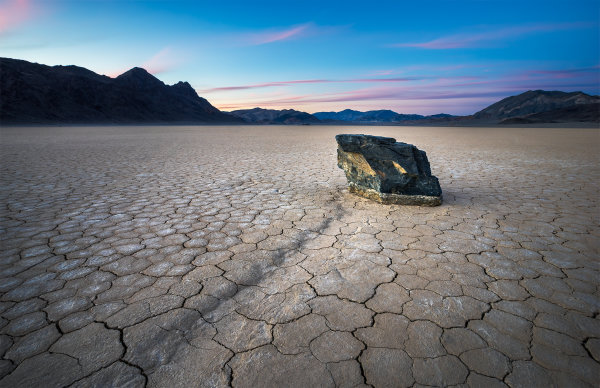
I probably won’t ever go again. That’s how bad it’s gotten. Not unless something changes.
If you’re into travel and landscape photography you’ve likely either been to or have on your bucket list the Racetrack Playa in Death Valley National Park. I’ve been twice now, which is really a lot harder than it sounds if you haven’t been before. In this article, I want to go over my current thoughts on this peculiar and incredible place and the impact that tourists and photographers are having on it. I think it’s an important dialogue to open up, so I hope you’ll join in the conversation once you’ve read the article.
What is the Racetrack Playa?
Perhaps you’ve never heard of the Racetrack Playa, or maybe you’ve heard of it but just don’t know much about it? The Racetrack Playa is a remote location deep within Death Valley National Park. It is a massive playa (dry lake bed) that measures 2.8 miles long by 1.3 miles (4.5 km by 2.1 km) wide. The playa is famous amongst tourists and photographers because of its mysterious “sailing rocks” that leave trails behind them on the playa. It’s said that nobody has ever witnessed the rocks moving. Because of that, there is no shortage of theories about how they move about the playa. While the Racetrack Playa is incredibly remote, in reality it’s really not all that far away from the main attractions at the park like the Mesquite Sand Dunes. The problem is that a mountain range sits in-between the two (so you have to drive all the way around).
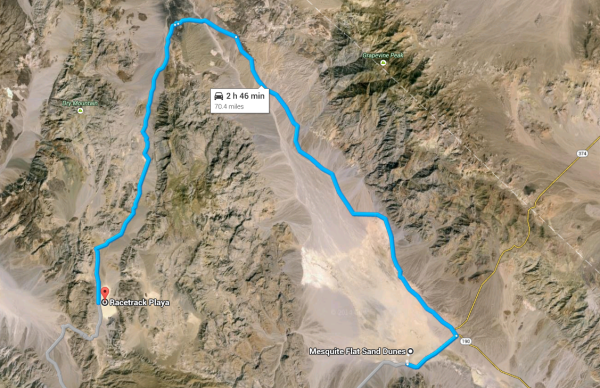
Getting there
Once you’ve driven the two hours on Scotty’s Castle Road and stopped at Ubehebe Crater, you still have a daunting 27 mile washboard gravel road to contend with. From Furnace Creek to Racetrack Playa, you’ll be driving uphill the entire way and will gain around 3,500 feet in altitude. The gravel road is fine in a few areas, but absolutely frustrating most of the way. The entire time you’re dodging large rocks and boulders in the middle of the road, pulling over to let oncoming traffic pass by and trying to ride that balance between going safe and slow to avoid a flat tire, and fast and dangerous to avoid the washboard style road and all the bumps and vibrations.
Both of my trips into the Racetrack Playa had potentially horrendous outcomes but both also produced some great images for my portfolio. The first trip in was with my buddy Cliff Baise in his VW Toureg. We made it in just fine, but on the way out the road just proved too much for the SUV. His drive train got damaged at some point and we had to limp into Las Vegas for three days while the car got repaired. The second trip was during the first of two photography workshops I led inside the park with Mike Mezeul II back in February of this year. During that workshop, we took another SUV in and got a flat tire when we pulled into Tea Kettle Junction. Luckily we had a spare tire and got out fine (but it could have ended a lot worse if we had gotten another flat on the way out).
All of this to say that by the time we actually got to the playa parking lot–after 3 hours of driving and a flat tire–I wasn’t in the best of moods, and I was doing my best to stay calm and happy for my workshop students. After all, this place is a bucket list item for most photographers and just being here is a huge blessing. So if just getting to the Racetrack isn’t bad enough, here’s what we were greeted with as we walked out onto the playa…
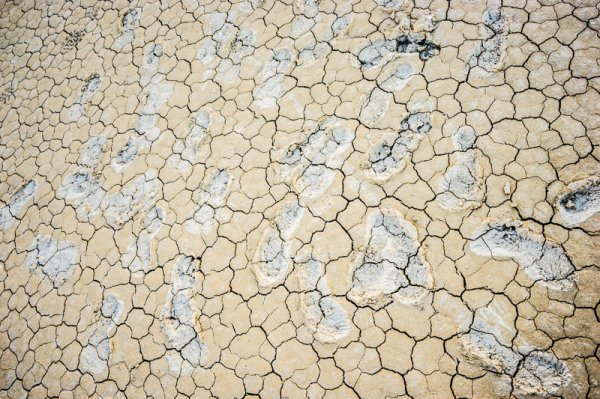
We anticipated this, but had no idea the extent of how bad it was. The Death Valley National Park Facebook page had shared a similar photo at the beginning of the month but we had heard rumors that the photo was taken well off the beaten path of the playa. Here’s that photo:
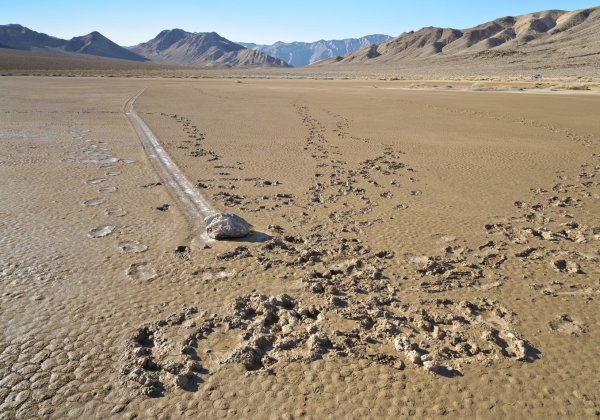
Image originally posted on the Death Valley National Park Facebook page. Used with permission.
This is what happens when logic flies out the window. This is pure stupidity and selfishness at it’s worst. Matt Kloskowski wrote an article that somewhat defended the actions of whoever did this. He wasn’t by any means saying it was ok, just that they didn’t know any better and that it’s just dirt. I respectfully disagree. When I took my workshop group out onto that playa, it was plenty dry enough to walk on without leaving any trace. If it was still damp or muddy, we would have turned right around and left (the group knew that going in). As we explored the Racetrack during sunset, it was virtually impossible to find a good composition that didn’t have footprints littering the scene. It was far, far worse than I had expected. Nobody could have done this without at least thinking to themselves that maybe they shouldn’t be doing it. I refuse to believe otherwise.
But it’s just dirt – who cares?
It matters because the playa, and the park as a whole, only get around one to two inches of rain per year. That means that these footprints will likely be on the playa for years and years. Unfortunately, that’s not where the problem ends.
Childish playa mischief
Another thing that becomes painfully obvious while exploring the Racetrack Playa is the increasingly high amount of mischief going on. The very first rock trail that I came to on the playa had no rock at either end. The next trail I came to was around 15-20 inches wide (quite large for the playa) but only had a tiny rock (maybe 6 inches) at the end. Yet another rock trail I found was just the opposite; around 6 inches wide but with a much larger rock at the end. There were trails with no rocks, trails with rocks at both ends, rocks with far too extravagant trails behind them and so on.
It’s quite clear that people tamper with the rocks at Racetrack Playa. Unfortunately, the likely source of this mischief is other photographers. It takes a LOT of walking and a LOT of patience to find the perfect rock, with a perfect trail behind it, with a perfect backdrop behind that. The problem is, some people don’t have the amount of patience it requires to get a shot like that. My guess is that photographers are finding good trails and good backdrops, and then replacing the rocks in front of them with larger rocks from somewhere else. I talked to one photographer out there who heard a rumor that another photographer took a picture of a rock and then move it as far away as he could, ensuring that nobody else would ever get the same photo.
There have also been tire tracks both times I visited the playa, leading out toward the rocks. So who’s responsible for that? Is it tourists, or photographers who just don’t want to make the hike out to good rocks? Is it people who take their trucks out on the playa to drag the rocks around? Who knows. Either way, there are plenty of signs prohibiting driving onto the playa.
So what can we do?
I think the most important thing we can do is just get the word out. I’m convinced that the overwhelming majority of photographers are good people and respect the things they photograph. It’s just unfortunate that the small percentage of people who don’t fall into that category can completely ruin a good thing like the Racetrack Playa.
I hate to say it, but at this point I think I would totally support Death Valley National Park changing the Racetrack Playa to a permit only destination and even making it a lottery system much like Vermillion Cliffs National Monument. Those who get accepted to go in will be educated on the playa, how to take care of it and precautions to take when going out. The footprints would disappear, the mischief would go away and photographers everywhere would rejoice.
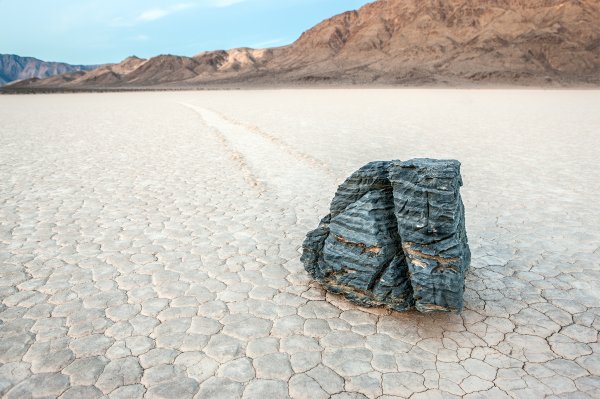
Conclusion
My experience with the Racetrack Playa has been a frustrating one to say the least. That’s why I really want to get the word out about the shape that it’s in and get people talking about it. What do you think about all this? What’s your opinion? How should we fix it? Let me know in the comments below!
Editor’s note: I think this is an important topic for discussion. Some photographers like Ansel Adams were key in the conservation of National Parks in the US and he was a big advocate for leaving nature natural. So how have we gotten so off track since Ansel Adam’s time? If photographers of his era were as careless and selfish there might not even be parks for today for us to enjoy. So what legacy will be leave our future generation? How can we make a stand and make a difference? I just used this quote on someone else and thought it appropriate to share here also:
I am only one,
But still I am one.
I cannot do everything,
But still I can do something;
And because I cannot do everything,
I will not refuse to do the something that I can do.
Edward Everett Hale (often wrongly attributed to Helen Keller as she has used it in her writing as well)
So what will you do?
The post Is Visiting the Racetrack Playa in Death Valley Worth It? by James Brandon appeared first on Digital Photography School.

Digital Photography School













.gif)


.gif)
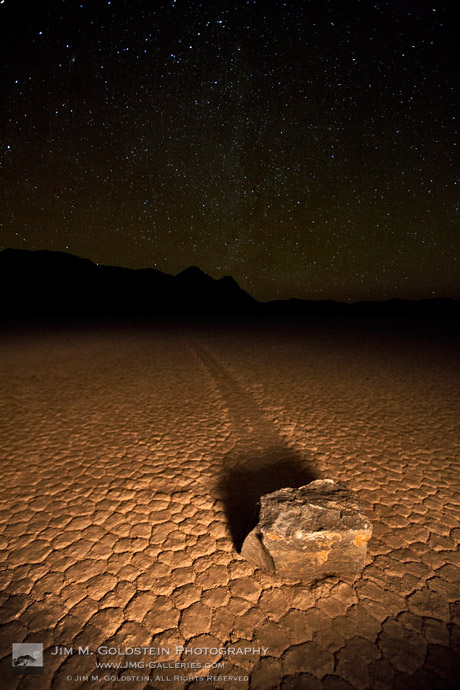 blah
blah.gif)
You must be logged in to post a comment.